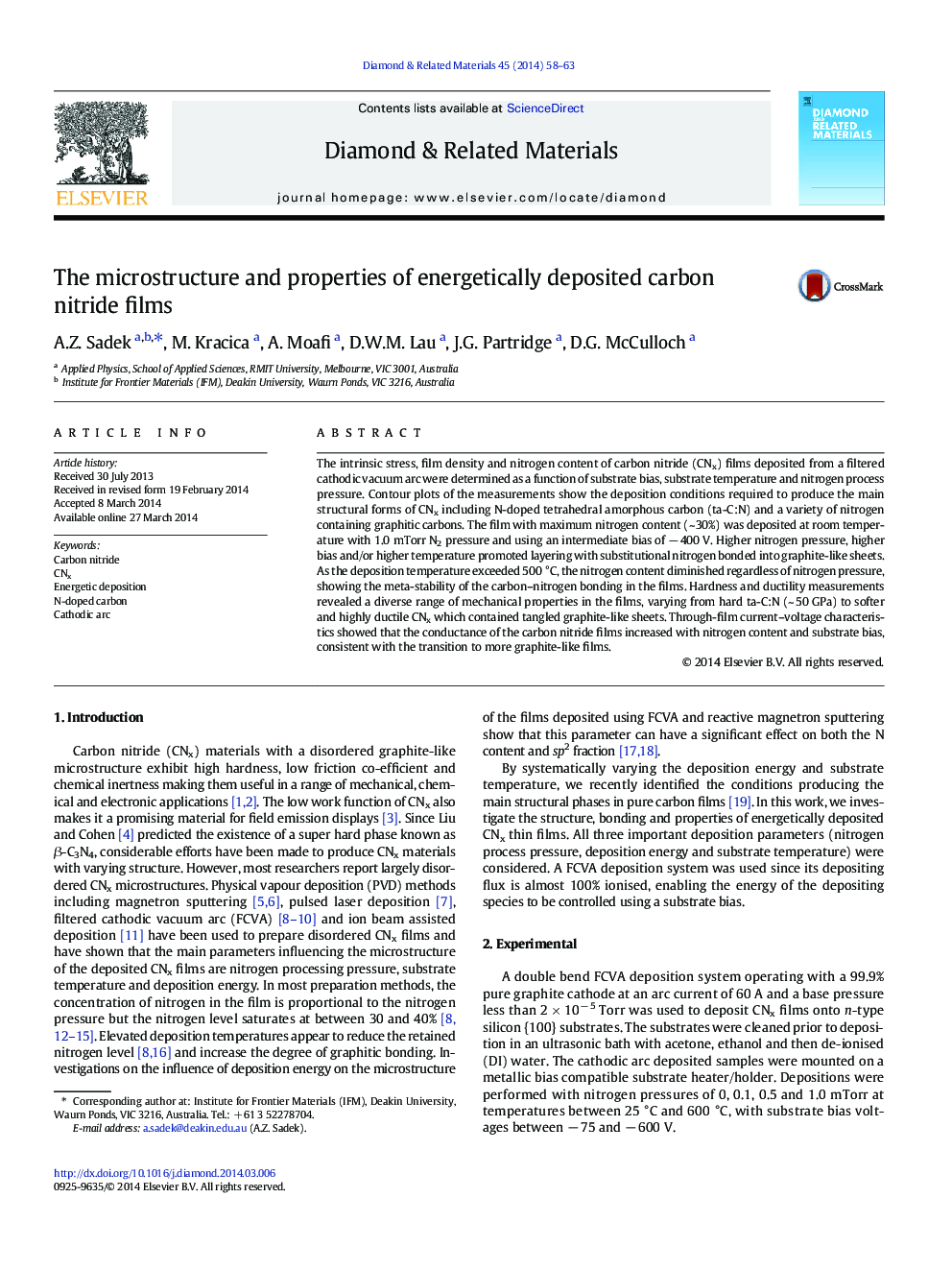| Article ID | Journal | Published Year | Pages | File Type |
|---|---|---|---|---|
| 701739 | Diamond and Related Materials | 2014 | 6 Pages |
•Films of ta-C:N or sp2 rich CNx formed by controlling nitrogen pressure and substrate bias conditions.•Higher nitrogen pressure, bias and/or temperature facilitate graphitic bonding in the CNxfilms.•Films of ta-C:N were hard (~50 GPa) whilst CNx films containing tangled graphitic sheets, were softer and highly ductile.•The electrical conductance of the CNx films increased with both nitrogen content and substrate bias.
The intrinsic stress, film density and nitrogen content of carbon nitride (CNx) films deposited from a filtered cathodic vacuum arc were determined as a function of substrate bias, substrate temperature and nitrogen process pressure. Contour plots of the measurements show the deposition conditions required to produce the main structural forms of CNx including N-doped tetrahedral amorphous carbon (ta-C:N) and a variety of nitrogen containing graphitic carbons. The film with maximum nitrogen content (~ 30%) was deposited at room temperature with 1.0 mTorr N2 pressure and using an intermediate bias of − 400 V. Higher nitrogen pressure, higher bias and/or higher temperature promoted layering with substitutional nitrogen bonded into graphite-like sheets. As the deposition temperature exceeded 500 °C, the nitrogen content diminished regardless of nitrogen pressure, showing the meta-stability of the carbon–nitrogen bonding in the films. Hardness and ductility measurements revealed a diverse range of mechanical properties in the films, varying from hard ta-C:N (~ 50 GPa) to softer and highly ductile CNx which contained tangled graphite-like sheets. Through-film current–voltage characteristics showed that the conductance of the carbon nitride films increased with nitrogen content and substrate bias, consistent with the transition to more graphite-like films.
